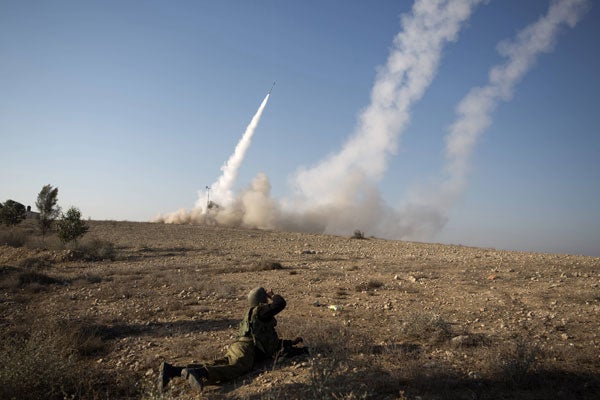In an area of the Pacific Ocean near Hawaii on February 12, 2013, the Navy and Missile Defense Agency conducted a successful intercept test of a combined sea-based and space-based system against a medium-range ballistic missile.
The sea-based component was the Aegis ballistic missile defense system and its already –deployed Standard Missile-3 Block I-A interceptor. The space-based component was the Space Tracking and Surveillance System (STSS) satellites. While this was the 24th successful intercept test since 2002, out of 30 attempts for the Aegis system alone, it represents a dramatic step forward for the overall U.S. ballistic missile defense program.
For the first time the successful intercept was conducted by using STSS, which is composed of satellite sensors, as the primary, although not exclusive, source of the targeting data. These sensor satellites are demonstrators at this point. As a result, the test reveals the enormous advantages for U.S. missile defense capabilities obtained by deploying missile defense systems in space. This should not be surprising to anyone because space is where all but the shorter-range ballistic missiles fly. In fact, the physical destruction of the target during this test took place in space.
Accordingly, it is essential to describe the extraordinary advantages confirmed by the use of the satellites in this particular test. The targeting data generated by the satellites permitted the interceptor to destroy the target earlier in its midcourse flight trajectory. This is because the satellite data permitted the execution of a “launch on remote” plan for the interceptor.
This means the data allowed the sailors on the ship to launch the interceptor well before the target came into the view of the ship’s own targeting radar. The earlier intercept improves missile defense performance in several ways:
- It permits the interceptor to defend a larger area.
- The additional data serves to improve both the accuracy and reliability of the system.
- Under certain circumstances it will permit an additional shot with a second interceptor in the case where the initial attempt failed. This capability is called “shoot-look-shoot.”
- And, most importantly, the data will permit the same interceptor to counter longer-range, faster-flying missiles by intercepting them in the late midcourse stage of flight. This is particularly important because it portends a circumstance where the existing Standard Missile Block I-A interceptor will be capable of defending the territory of the United States against long-range missiles. Otherwise, the U.S. will be forced to wait many years before the deployment of a future model of the Standard Missile, called the Block II-B.
There is, however, an unfortunate circumstance that pertains to this test. The Missile Defense Agency is in the process of phasing out the STSS program. The Agency is doing this by pursuing a new alternative program for what is called the Precision Tracking Space System (PTSS). It claims it is taking this step because it will reduce costs.
By outward appearances, it seems likely that shifting to the alternative program will just serve to delay the fielding of a more robust missile defense capability in space compared to building out a constellation of STSS satellites in a spiral development process.
The unanswered question is whether the Missile Defense Agency will be permitted to advance this space-based missile defense capability—whether through the STSS program or the PTSS program—to a deployed constellation at all. There should be little doubt that arms control advocates, both inside the Administration and out, are livid that this test took place at all, let alone that it was successful. This is because a space-based missile defense capability is incompatible with the Administration’s arms control agenda.
First, the Administration is committed to a policy that limits U.S. missile defense capabilities so as not to alter the strategic balance with Russia. This commitment to the Russians was made in the preamble of the bilateral New Strategic Arms Reduction Treaty (New START) arms control agreement. U.S. missile defense capabilities, when augmented with space-based systems, including sensors and interceptors, will necessarily alter the strategic balance with Russia.
Second, the Administration is committed to the achievement of a multilateral space arms control agreement, most likely in the form of what is being called a Space Code of Conduct. While the Space Code of Conduct would not prohibit the fielding of either STSS or PTSS satellites, it is likely to restrict when and how they may be used and probably render them cost ineffective for missile defense.
The reality is that the Obama Administration’s arms control agenda, unless changed, will cripple U.S. missile defense capabilities.
































